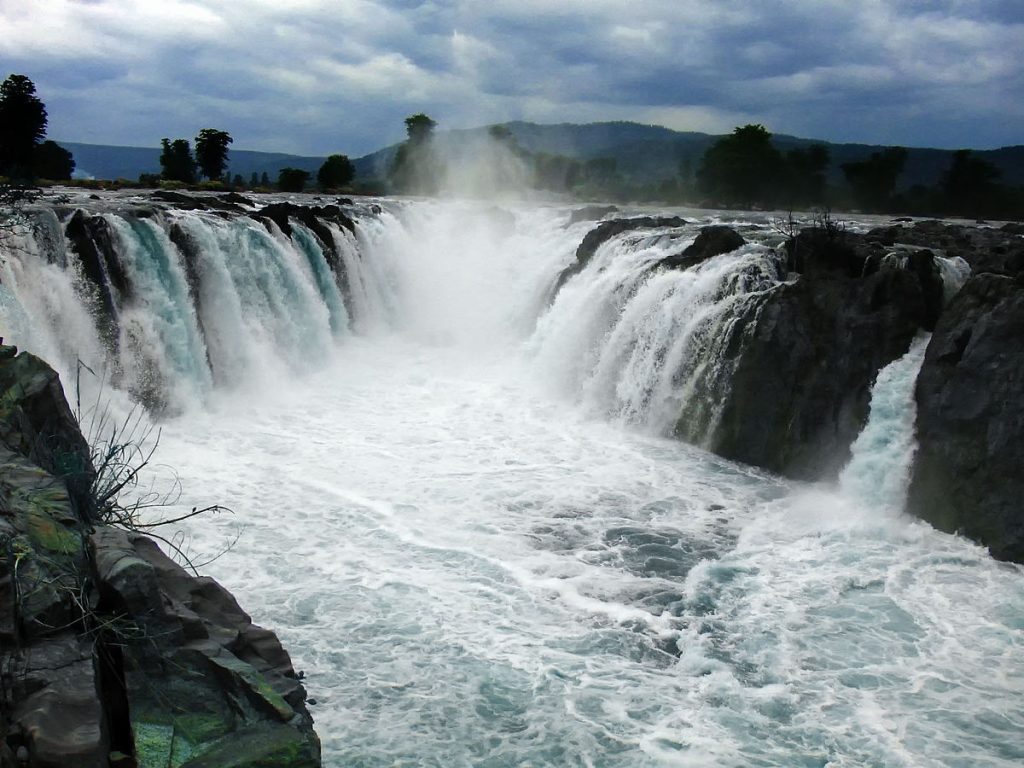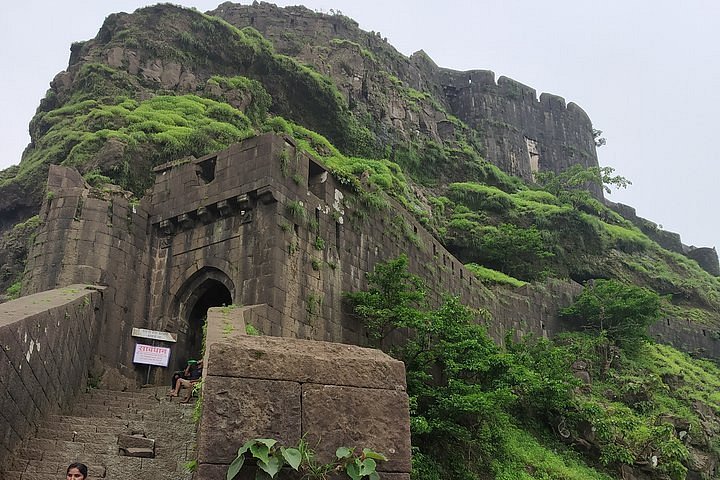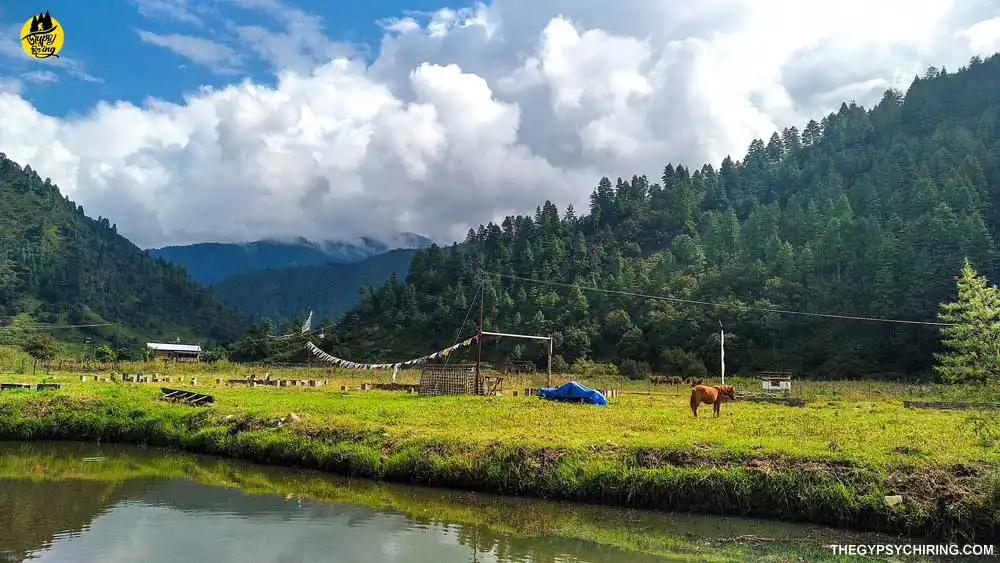Jawab Masjid in Agra is a stunning example of Mughal architecture. Located near the iconic Taj Mahal, it offers visitors a glimpse into history.
Constructed during the reign of Shah Jahan, Jawab Masjid stands as a serene symbol of Islamic art and culture. The mosque’s red sandstone and intricate marble work are a testament to the craftsmanship of that era. Its name, “Jawab,” means “answer,” as it was built to balance the architectural symmetry of the Taj Mahal complex.
This mosque not only serves as a place of worship but also as an architectural marvel. Whether you are a history buff or an architecture enthusiast, Jawab Masjid in Agra is a must-visit. Discover the rich heritage and spiritual significance of this timeless structure.
Historical Significance
Jawab Masjid in Agra holds historical significance as it complements the Taj Mahal. This mosque served as a place for worship and symmetry. Built during the Mughal era, it showcases exquisite Islamic architecture.
### Historical Significance Jawab Masjid in Agra is not just a place of worship; it’s a window into the past. This mosque stands as a testament to the architectural brilliance and cultural richness of the Mughal era. When you step inside, you’re not only experiencing a piece of history but also connecting with the artistic legacy that has been meticulously preserved over centuries.Origins Of Jawab Masjid
The Jawab Masjid, often referred to as the “Answer Mosque,” was constructed during the reign of the Mughal Emperor Shah Jahan in the 17th century. Located within the Taj Mahal complex, it was built as a functional counterpart to the main mosque on the western side. Its primary purpose was to maintain the architectural balance and symmetry, a principle deeply cherished by Mughal architects. Imagine standing where royal architects once debated the best ways to honor symmetry and religious devotion in their designs.Influence Of Mughal Architecture
The Jawab Masjid showcases the quintessential elements of Mughal architecture. The red sandstone structure, adorned with intricate white marble inlay work, is a sight to behold. You can’t help but marvel at the domes, arches, and minarets that draw your eyes upward, making you feel part of something grand and timeless. The calligraphy, floral motifs, and geometric patterns reflect the artistic zenith of the Mughal period. This isn’t just about stone and mortar; it’s about the stories they tell and the legacy they leave behind. Have you ever wondered why these architectural elements are so captivating? Each detail, from the symmetry to the color choice, is meant to evoke a sense of harmony and spiritual tranquility. When you visit, you’re not just seeing a building; you’re experiencing the philosophies that shaped an era. By understanding the historical significance of Jawab Masjid, you gain a deeper appreciation for the cultural and architectural achievements of the Mughal Empire. This knowledge transforms a simple visit into an enriching journey through time. So, next time you find yourself in Agra, take a moment to stand in the courtyard of Jawab Masjid. Reflect on the layers of history and artistry that surround you. You’ll leave with not just photographs, but memories that connect you to the soul of Mughal India. How does understanding the historical context of places like Jawab Masjid enhance your travel experiences? Share your thoughts in the comments below!Architectural Features
The Jawab Masjid in Agra is a marvel of Mughal architecture. Its design reflects the grandeur of that era. The mosque stands adjacent to the iconic Taj Mahal. It showcases exquisite craftsmanship and intricate details.
Design And Layout
The mosque has a rectangular layout. The central prayer hall is spacious. It features three domes on top. The domes are beautifully decorated. The mosque is built using red sandstone. This gives it a striking appearance. The courtyard is large and open. It provides a serene environment for prayers.
The entrance has a grand archway. This archway is detailed and inviting. The overall layout is symmetrical. This symmetry adds to its aesthetic appeal. Each section of the mosque is well-planned. The design reflects the architectural brilliance of that time.
Intricate Carvings
The mosque boasts intricate carvings throughout. Skilled artisans created these designs. The walls feature floral and geometric patterns. These patterns are detailed and mesmerizing. The carvings also include Arabic calligraphy. This adds a spiritual touch to the structure. The mihrab, where the Imam leads prayers, is ornately decorated. It stands out with its intricate designs.
The ceilings have delicate artwork. These carvings are a testament to Mughal artistry. Each piece tells a story. The carvings enhance the mosque’s beauty. They showcase the dedication of the craftsmen. Visitors often admire these intricate details. The carvings make the mosque a visual delight.
Cultural Importance
The Jawab Masjid in Agra holds a significant place in cultural history. This mosque not only serves as a place of worship but also as a community hub. Its cultural importance is reflected in various practices and gatherings.
Religious Practices
The Jawab Masjid is central to daily prayers for many locals. It offers a serene space for worship and reflection. The mosque follows traditional Islamic rituals. These rituals strengthen the community’s faith and unity. Friday prayers attract a larger congregation. Special prayers during Ramadan highlight its religious significance.
Community Gatherings
The mosque is a focal point for community events. It hosts lectures and discussions on Islamic teachings. These gatherings foster social bonds and knowledge sharing. During festivals, the mosque becomes a vibrant hub of activity. Community members come together to celebrate and support each other. The Jawab Masjid serves as a pillar of communal harmony.
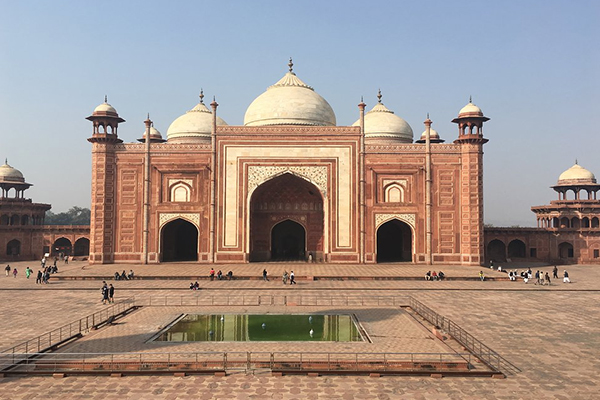
Credit: www.tourmyindia.com
Preservation Efforts
The Jawab Masjid in Agra, a historical marvel, has captivated visitors for centuries. However, preserving such an ancient structure is no small feat. The ongoing preservation efforts aim to maintain its grandeur for future generations to admire. Let’s explore the significant steps taken to ensure this iconic mosque continues to stand the test of time.
Restoration Projects
Restoration projects are at the heart of preserving Jawab Masjid. Skilled artisans and historians collaborate to restore the mosque’s intricate details. These projects involve meticulous work, from reinforcing structural integrity to refurbishing worn-out sections.
For instance, during a recent visit, I observed craftsmen carefully replacing weathered stones with ones that matched the original material. It’s fascinating to see how they blend modern techniques with traditional craftsmanship. This not only preserves the aesthetic appeal but also ensures durability.
Have you ever wondered how these experts decide what needs restoration? They conduct thorough assessments, identifying areas that need immediate attention. By prioritizing critical sections, they ensure the mosque remains safe and accessible.
Maintaining Heritage
Preservation goes beyond physical restoration. Maintaining the heritage of Jawab Masjid involves educating the public about its historical and cultural significance. Informational plaques and guided tours help visitors appreciate the mosque’s rich history.
During one of my guided tours, I learned about the mosque’s unique architectural elements and their historical context. This experience deepened my appreciation for the preservation efforts. It’s not just about maintaining a structure; it’s about keeping its story alive.
Moreover, preservationists work closely with local communities, ensuring that the mosque’s heritage is respected and celebrated. Community engagement programs encourage local participation in preservation activities, fostering a sense of ownership and pride.
What role do you think local communities play in preserving historical sites? Their involvement is crucial. They provide invaluable insights and help monitor the mosque’s condition regularly, ensuring any issues are addressed promptly.
In conclusion, the preservation efforts at Jawab Masjid Agra are a testament to the dedication of those who work tirelessly to maintain its splendor. Through restoration projects and heritage maintenance, they ensure that this historical gem continues to inspire and educate visitors from around the world. Next time you visit, take a moment to appreciate the intricate efforts that go into preserving such a magnificent piece of history.
Visitor Experience
Visiting the Jawab Masjid in Agra offers a unique and enriching experience. Nestled near the iconic Taj Mahal, this mosque attracts numerous tourists. The serene environment and historical significance make it a must-visit. Visitors can immerse themselves in its rich history and stunning architecture.
Guided Tours
Guided tours of the Jawab Masjid enhance the visitor experience. Knowledgeable guides share fascinating stories and facts. They help visitors appreciate the mosque’s historical context. These tours are available in multiple languages.
Small group sizes ensure a personalized experience. Guides often highlight unique architectural details. They also explain the mosque’s cultural significance. Booking a guided tour can be done online or on-site.
Photographic Opportunities
Photographic opportunities at Jawab Masjid abound. The mosque’s red sandstone structure is striking. It contrasts beautifully with the surrounding greenery. Early morning and late afternoon offer the best light for photos.
Visitors can capture intricate carvings and arches. The mosque’s symmetry provides excellent backdrops. Photography enthusiasts will find endless inspiration here. Remember to be respectful while taking photos. The mosque remains a place of worship.
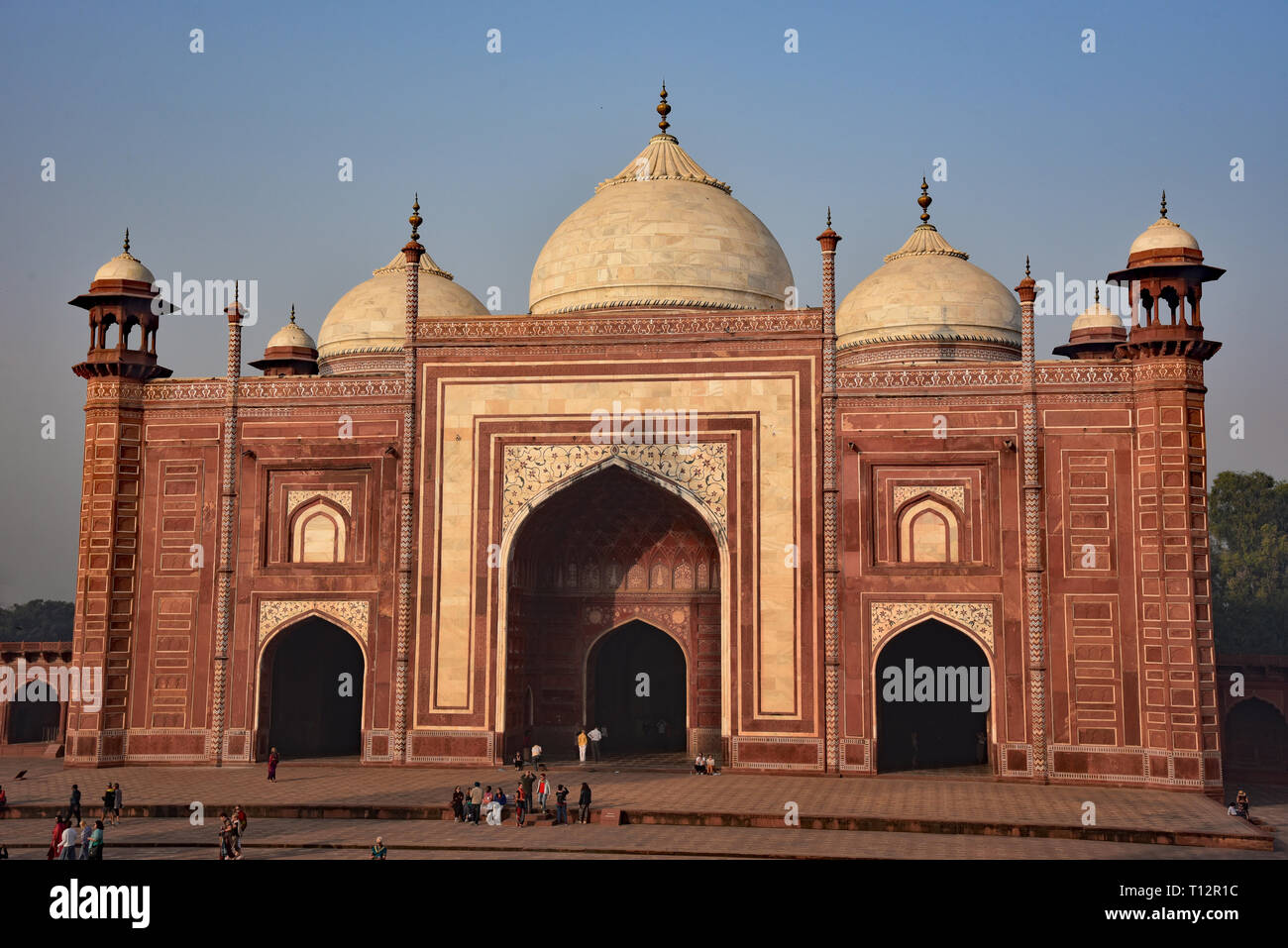
Credit: www.alamy.com
Comparisons With Other Monuments
Jawab Masjid in Agra stands gracefully beside the famous Taj Mahal. Unlike other monuments, it showcases unique Mughal architecture. Its serene ambiance and intricate designs draw comparisons to other majestic structures in India.
## Comparisons with Other Monuments When you visit the Jawab Masjid in Agra, it’s easy to get swept away by its grandeur and historical significance. But how does it compare to other famous monuments nearby? Let’s dive into some interesting comparisons that highlight the unique charm of Jawab Masjid. ###Taj Mahal Proximity
Standing just to the east of the world-renowned Taj Mahal, Jawab Masjid offers an intriguing juxtaposition. While the Taj Mahal attracts millions with its iconic white marble and romantic lore, Jawab Masjid quietly holds its own as a place of worship and historical importance. Imagine standing on the mosque’s platform. You can almost feel the stories of the people who prayed here, with the Taj Mahal’s stunning silhouette framing the background. It’s a perfect spot for photography enthusiasts looking to capture a different angle of the Taj Mahal. When you visit, you might notice fewer crowds around Jawab Masjid, allowing for a more serene experience. It provides a peaceful counterpoint to the bustling activity around the Taj Mahal. Have you ever wondered what it was like to live in an era where such monumental constructions were everyday sights? ###Other Mughal Structures
Jawab Masjid is often compared to other Mughal-era structures, each with its own unique flair. Consider the Agra Fort, another architectural marvel just a short distance away. While Agra Fort impresses with its military might and sprawling complex, Jawab Masjid offers a more intimate glimpse into Mughal religious life. Similarly, the Itimad-ud-Daulah, often called the ‘Baby Taj,’ showcases intricate marble work and delicate inlays. In contrast, Jawab Masjid’s red sandstone gives it a robust and earthy appearance. This contrast highlights the diverse materials and styles used during the Mughal period. One personal experience stands out: walking through the halls of Jawab Masjid, the sense of history feels almost tangible. Unlike the grandiosity of the Taj Mahal or the fortifications of Agra Fort, Jawab Masjid invites contemplation and a deeper understanding of the everyday lives of its historical users. Have you ever felt the need to compare historical sites to truly appreciate their individual beauty? Next time you find yourself in Agra, take a moment to explore these comparisons yourself. The differences will not only enhance your appreciation of each site but also deepen your understanding of Mughal history. What other contrasts have you noticed when visiting multiple historical sites? Share your thoughts and experiences in the comments below!Artistic Elements
The Jawab Masjid in Agra is a true marvel of Islamic architecture. Its artistic elements attract many visitors every year. The mosque showcases intricate designs and exquisite details. These features highlight the rich heritage of Mughal art.
Calligraphy
The calligraphy in Jawab Masjid is mesmerizing. Artists have inscribed verses from the Quran with great skill. The Arabic letters are beautifully crafted. They adorn the walls and arches of the mosque. Each stroke of the pen tells a story. It reflects the devotion and craftsmanship of the artists. The calligraphy is not just decoration. It is a profound expression of faith.
Mosaic Work
The mosaic work in the Jawab Masjid is stunning. Small, colorful tiles form intricate patterns. These mosaics cover the floors, walls, and ceilings. The designs often feature geometric shapes and floral motifs. They create a visual feast for the eyes. The use of symmetry in the mosaics is impressive. It shows the mathematical precision of the artisans. The mosaics add depth and beauty to the mosque. They make it a masterpiece of Islamic art.
Local Legends
The Jawab Masjid in Agra is not just a piece of history. It is a treasure chest of local legends. These stories have passed through generations. They give the mosque an aura of mystery. They also add to its cultural significance.
Myths And Folklore
Some say the Jawab Masjid has hidden tunnels. These tunnels supposedly lead to secret chambers. These chambers are believed to hold treasures and ancient artifacts. Locals tell tales of these tunnels with great excitement. The mystery remains unsolved.
Another popular myth involves a ghost. This ghost is believed to guard the mosque at night. People claim to hear strange noises after dark. The ghost is said to be a protector. It ensures the mosque remains undisturbed.
Historical Anecdotes
One anecdote speaks of a hidden message. This message is believed to be carved into the mosque’s walls. Scholars and historians have yet to decode it. The message is thought to reveal a secret. A secret that could change our understanding of the mosque.
Another story involves a royal visit. It is said that a Mughal princess once visited the Jawab Masjid. She was so impressed that she ordered its preservation. This anecdote highlights the mosque’s importance to the royal family.

Credit: www.shutterstock.com
Frequently Asked Questions
Who Built Pearl Mosque Agra?
Mughal Emperor Shah Jahan built the Pearl Mosque in Agra. It is also known as Moti Masjid.
What Is The Name Of The Mausoleum In Agra That Is One Of The Most Famous Landmarks In India?
The mausoleum in Agra, known as the Taj Mahal, is one of India’s most famous landmarks. It attracts millions of visitors each year. Built by Emperor Shah Jahan, it is a symbol of love and architectural marvel.
Does Taj Mahal Have A Masjid?
Yes, the Taj Mahal has a Masjid. It is located on the western side of the main structure. It is used for prayer.
Who Built The Jama Masjid At Agra?
Shah Jahan built the Jama Masjid at Agra. The construction was completed in 1648. This mosque is a significant example of Mughal architecture.
Conclusion
Jawab Masjid in Agra is a remarkable historical site. Its architecture captivates visitors. The serene atmosphere offers peace and reflection. This mosque is a must-see for history lovers. Visiting Jawab Masjid enriches your understanding of Agra’s rich culture. Make sure to explore its intricate designs.
You will appreciate the craftsmanship. Jawab Masjid stands as a testament to Mughal artistry. So, plan your visit soon and experience its beauty firsthand.
{ “@context”: “https://schema.org”, “@type”: “FAQPage”, “mainEntity”: [ { “@type”: “Question”, “name”: “Who built Pearl Mosque Agra?”, “acceptedAnswer”: { “@type”: “Answer”, “text”: “Mughal Emperor Shah Jahan built the Pearl Mosque in Agra. It is also known as Moti Masjid.” } } , { “@type”: “Question”, “name”: “What is the name of the mausoleum in Agra that is one of the most famous landmarks in India?”, “acceptedAnswer”: { “@type”: “Answer”, “text”: “The mausoleum in Agra, known as the Taj Mahal, is one of India’s most famous landmarks. It attracts millions of visitors each year. Built by Emperor Shah Jahan, it is a symbol of love and architectural marvel.” } } , { “@type”: “Question”, “name”: “Does Taj Mahal have a Masjid?”, “acceptedAnswer”: { “@type”: “Answer”, “text”: “Yes, the Taj Mahal has a Masjid. It is located on the western side of the main structure. It is used for prayer.” } } , { “@type”: “Question”, “name”: “Who built the Jama Masjid at Agra?”, “acceptedAnswer”: { “@type”: “Answer”, “text”: “Shah Jahan built the Jama Masjid at Agra. The construction was completed in 1648. This mosque is a significant example of Mughal architecture.” } } ] }

